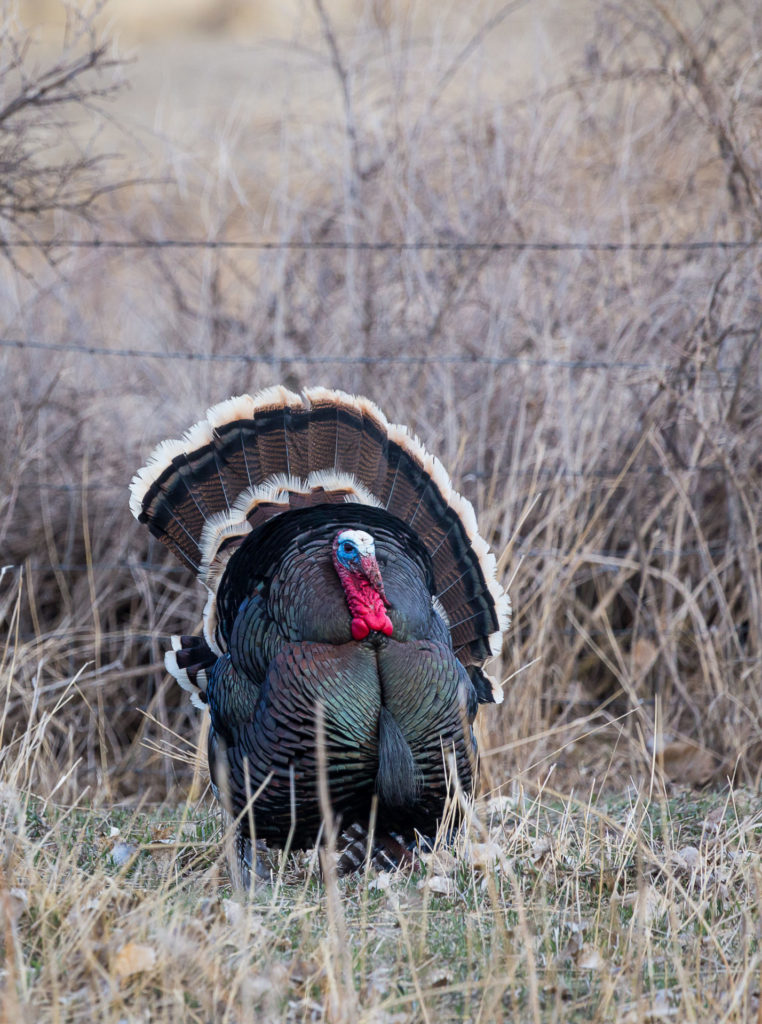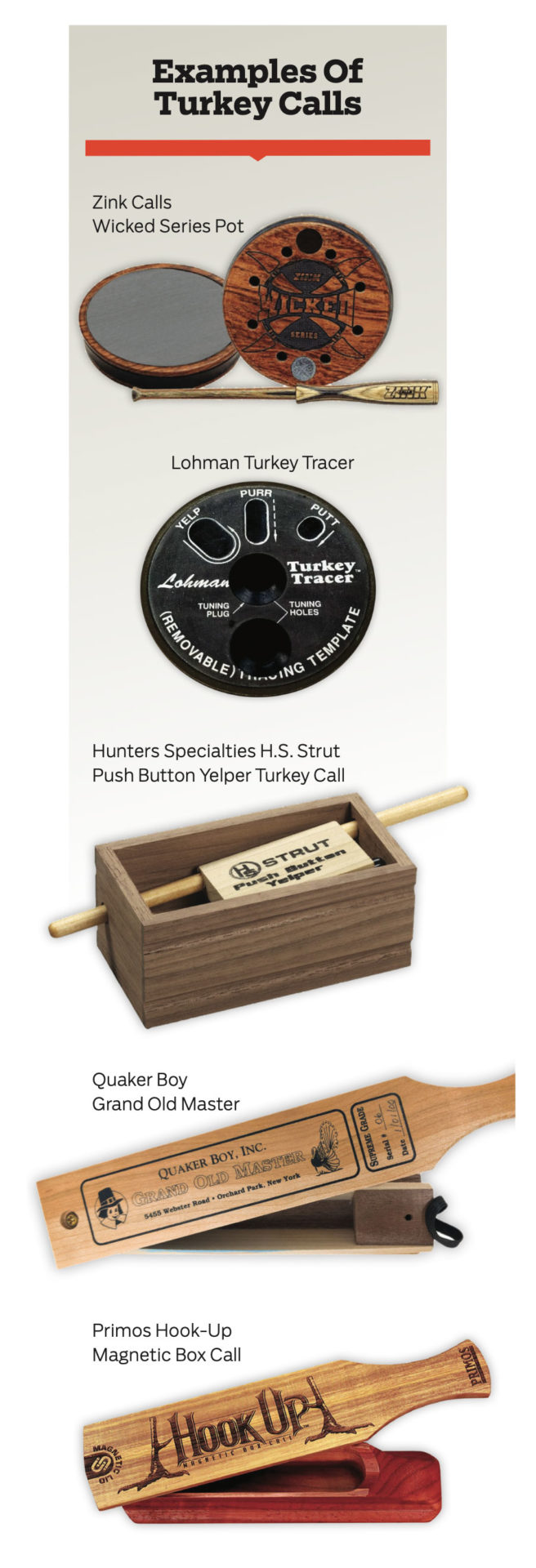If Greater Canada geese are to be considered the heavyweight champs of a waterfowler’s world, wild turkey are unquestionably an uplander’s equivalency. They can readily tip the scale at 20 pounds, with the odd bird pushing 25 pounds. And hunting these long beards can present a unique challenge worthy of the time and effort to harvest this one-of-a-kind game bird. Wild turkey may, in fact, be the wildlife management success story of the last half century.
Advertisement
Their numbers across North America have shown remarkable growth since the 1920s, when they had all but disappeared from 18 of their home range states, to today where they have been successfully transplanted into almost all 50 states and much of Canada. At one point, the population of wild turkey was estimated to be as low as 30,000, and numbers now exceed six million. It is a true success story for the bird, its wildlife managers and all those hunters who wish to pursue their Thanksgiving bird in the wild, rather than shrink wrapped from their local grocer’s frozen meat section.

While transplants were a major success elsewhere, British Columbia’s populations resulted from natural colonization during the 1970s and increased in the ensuing years to the point where limited entry hunting began in the late 1980s. Thankfully, burgeoning populations in the Kootenays resulted in the first open season for resident hunters in 2005. There are essentially three seasons: the spring for bearded toms, the fall for any turkey, and a bow-only season in September for bearded toms. As of the time of writing, there is an aggregate bag limit of two turkeys – only one may be taken in the spring, and one may be taken in the fall. Check your hunting regulations before heading out.
Advertisement
While there are six subspecies of wild turkey in North America, BC only has the Merriam. And while hunting techniques for turkey are generally similar, the habitats they occupy can vary, thereby dictating individual approaches for a successful hunt.
Hunting Strategies
There are five primary stratagems for hunting these impressive birds. They involve scouting, calling, call and decoy, call and stalk, and spot and stalk including reaping. I will discuss each.
Advertisement

Scouting & Patterning
I have found wild turkey scattered throughout the lower Kootenays, from the western slopes of the Rockies to as far west as the Okanagan. Potentially, the highest densities occur in the Creston Valley, although numbers even here tend to fluctuate, which bring me to a key ingredient of success. And that is scouting, scouting and more scouting. It boils down to getting out there well before opening day and spending those early morning or evening hours in likely-looking habitats, glassing and listening for birds. The spring hunter has a real advantage here, as the toms are not only very active, but also very vocal, which can be of significant assistance in locating birds. Once located, denote their location and then return for a few days in order to pattern the birds, not only to ensure that they will remain in the area, but also to establish potential roosting and feeding areas. Part of this patterning process should involve quietly working your way through the area to not only look for turkey sign, but to also locate potential calling sites. Pick at least two or three potential call sites, then, if the birds have moved, on opening morning you will be able to easily relocate. These sites must offer good visibility in at least three directions and provide a solid background for concealment. And concealment is most essential, so good camouflage or a blind may just provide the concealment you need to avoid a tom’s wary eyes.
As part of the scouting process and as soon as you have the birds you intend to hunt patterned, ensure you obtain permission to hunt from the landowner, that is of course if they are on private land, which many are these days. Do so well ahead of opening morning or you may find yourself looking for a last-minute hunt location, which can be another very good reason to have a back-up hunt location in your hip pocket.
Let’s Talk Turkey: Decoys, Stalking & Reaping
While calling and learning to call turkey can be a key ingredient to a couple of hunt strategies, it will only produce results if you have already done your scouting homework, as calling in habitats void of any turkey can only lead to a lack of confidence in your calling techniques. Whereas, if there are birds in the area, you will often at least get a response to your efforts. But whether you can actually bring a bird to within shooting range is then up to your mastery of the many varied calls turkey have in their vocabulary. There are as many as two dozen identifiable calls, of which the following nine are the most important. They are the tree yelp, plain yelp, cluck, purr, putt, cackle, cut and mating call, plus that distinctive call we all recognize as a turkey – the gobble. Each has its own place in the world of the wild turkey and turkey hunters.
But for the majority of us, let’s keep it simple. While there are a number of different calls and calling techniques, I have primarily stuck to box-type calls, although on occasion I have used slate calls. But no matter what call you choose, it is most important that you practice, with the qualifier that in order to practice effectively, one must have already developed an ear for what, in fact, is a realistic imitation. This can only come from listening to real turkeys, a recording of real turkeys or having the assistance of an experienced turkey hunter guide you through the process. There are also some very good instructional videos out there that will assist you in getting off on the right foot.
In spring, the concept is to imitate a hen turkey in an attempt to bring a mature (bearded) breeding tom to within range. This involves the mating call of three yelps rising in volume, a pause, and then two soft clucks. Learn this call and your chance of bringing a tom to gun has just escalated into the black. The next question to face the potential hunter is whether it pays to bother with a decoy. I have had success with or without one. But I should add that, at times, I believe a decoy has made a difference, particularly with a spooky tom. They can help keep the tom’s focus on the decoy, rather than on you; and in those final seconds of lining up your shot, it just may save the day. They aren’t costly and are easy to use, so my advice is to have one handy.
However, in the Kootenays I found the two most successful hunting strategies to be either call and stalk or spot and stalk. All too frequently, long-bearded toms tend to be overtly preoccupied tending their hens and generally may not to come to a call, but they will often give their location away by a response call. In this scenario, I slowly work my way in their direction and continue to call at various intervals to reestablish contact and location. Once in tight, a jake yelp may be all that is required to coax him away from his hens, as an aggressive tom will not tolerate a nearby interloper. If not, good camouflage gear and your stalking technique may just close the gap. Or you may utilize a new technique that is gaining hold throughout turkey land, and that is reaping, which is essentially the use of a turkey fan/decoy to hide behind as you stalk to within range. It works wonders, as toms see this as an approaching rival and will often come straight for you.
Reaping can also be an integral component of a pure spot and stalk. Where, instead of calling to locate birds, you rely on glassing or scouting to locate huntable birds. And if your inclination is to hunt in the fall, spot and stalk is often your only option as birds don’t respond to a call in the fall as they do in the spring. But to miss out on the thrill of calling in or reaping a strutting mature tom turkey during a spring hunt is, from my perspective, to miss out on the true elements of hunting this great game bird.
Quick Shotgun Pattern Check
If you can’t readily find a shotgun pattern target, take an ordinary paper plate and draw a two-inch circle in the centre. Then pace off 40 yards at your local range and fire your potential turkey load at the paper plate, preferably off a rest. Then check to see how many pellet holes you find not only in the plate, but also within the two-inch circle. This should then give you a good idea of just how many pellets you might expect to contact the head of a big tom.
Camouflage & Gear
Opening morning finally arrives, you have your birds patterned, but is that enough? While you are certainly on the right track, there remains some fundamentals in gear that will not only improve your success ratio, but will also make for a more enjoyable experience all round. Let’s begin with your clothing. A camouflage outfit that matches the terrain, is quiet, comfortable, and even waterproof is the order of the day. Not only will it assist you in remaining hidden while calling, but it will also allow quiet movement during reaping/stalking or when adjusting for a shot. It will also keep you comfortable and dry should a sudden rain shower descend when least expected. While some hunters don’t bother concealing their face with a camouflage face mask, I can assure you that a white face is the first thing a wary tom will pick up on if it is not at least covered to some degree.
Next is a pack that accommodates your gear and folds out to provide a comfortable seat for those long sessions on the ground. Insofar as specific gear, the list should include pair of lightweight binoculars, a ground seat if your pack does not incorporate one, a couple of different calls, a reaping fan, a portable fold-up decoy or decoys and extra ammunition.
Guns & Ammunition
Turkey can be hunted with a variety of firearms or bows, and various manufacturers even make shotguns for the turkey hunter. But for the average turkey hunter in BC, do you really need to invest in another shotgun? My short answer is no. With a good 12 gauge, a tight choke and a shot shell designed for turkey, you can take any turkey out there. And my singular first choice in ammunition is Winchester’s Long Beard XR ammunition. With their innovative design, these shot shells produce incredibly tight patterns to well beyond 40 yards, an absolute requisite for turkey, especially if you prefer the headshot as I do (see my Beretta A400 Xtreme Plus article in this issue for turkey ammunition pattern efficiency). Two last provisos, however. First, pattern your shotgun with the load you have selected, just to ensure you know how your shotgun will pattern that particular load and, lastly, be patient before pulling that trigger. For a clean kill, ensure that this big bird is within 40 yards, and even closer if possible. You won’t be disappointed, as any tom turkey is fine table fare. But if you happen to harvest a mature tom with a nine-inch beard, now this is a trophy worthy of bragging rights.
